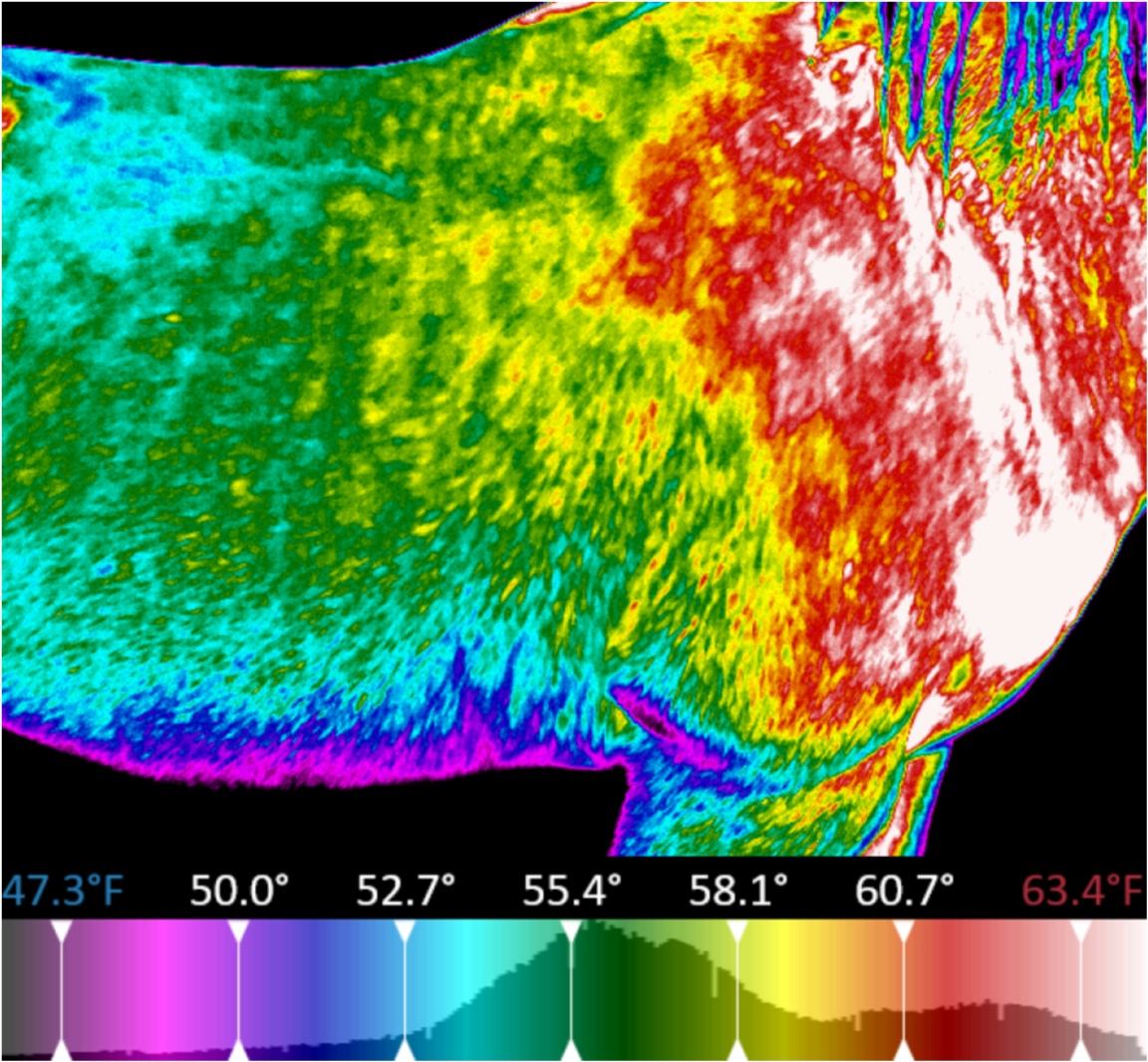Thermographically Determined Temperatures of the Distolateral Aspects of the Forelimbs in Horses
Abstract: To assess effects of camera angle and distance on measurement and reproducibility of thermographically determined temperatures of the distolateral aspect of the forelimbs in horses.
Design: Evaluation study
Animals: 10 adult horses
Procedures: Thermographic images of both forelimbs were obtained at 3 times during the day (replicates 1, 2, and 3); maximum surface temperature over 1 region (distolateral aspect of the third metacarpal bone and metacarpophalangeal joint) was measured. Standard images were obtained every 5 minutes for 1 hour with the camera positioned at an angle of 90° and a distance of 1.0 m from the forelimb; additional images were obtained at changed (± 20°) angles or at a 1.5-m distance. At the end of each replicate, 4 sets of additional images were obtained at 2-minute intervals to assess short-term reproducibility.
Results: Mean ± SD temperature difference between left and right forelimbs was 0.32° ± 0.27°C (0.58° ± 0.49°F) in standard images. Temperatures measured via standard images were highly correlated with those measured with the camera positioned at changed angles or distance. Mean ± SD differences between temperatures measured via standard images and those measured from changed angles or distance were considered small (≤ 0.22° ± 0.18°C [0.40° ± 0.32°F] for all comparisons). The degree of short-term reproducibility was high.
Conclusions and Clinical Relevance: Thermographically determined temperatures were unaffected by 20° changes in camera angle or a 0.5-m increase in camera distance from the forelimb. Minor temperature differences between left and right forelimbs were detected in the study and should be considered during diagnostic investigations.
Reference: Simone Westermann, Heinz H F Buchner, Johannes P Schramel, Alexander Tichy, Christian Stanek (2013) J Am Vet Med Assoc Feb 1;242(3):388-95
|
Interested in learning more about thermal imaging? Request a demonstration with Digatherm and discover how veterinary thermography can help you find problem areas faster and easily monitor treatment progress. |

